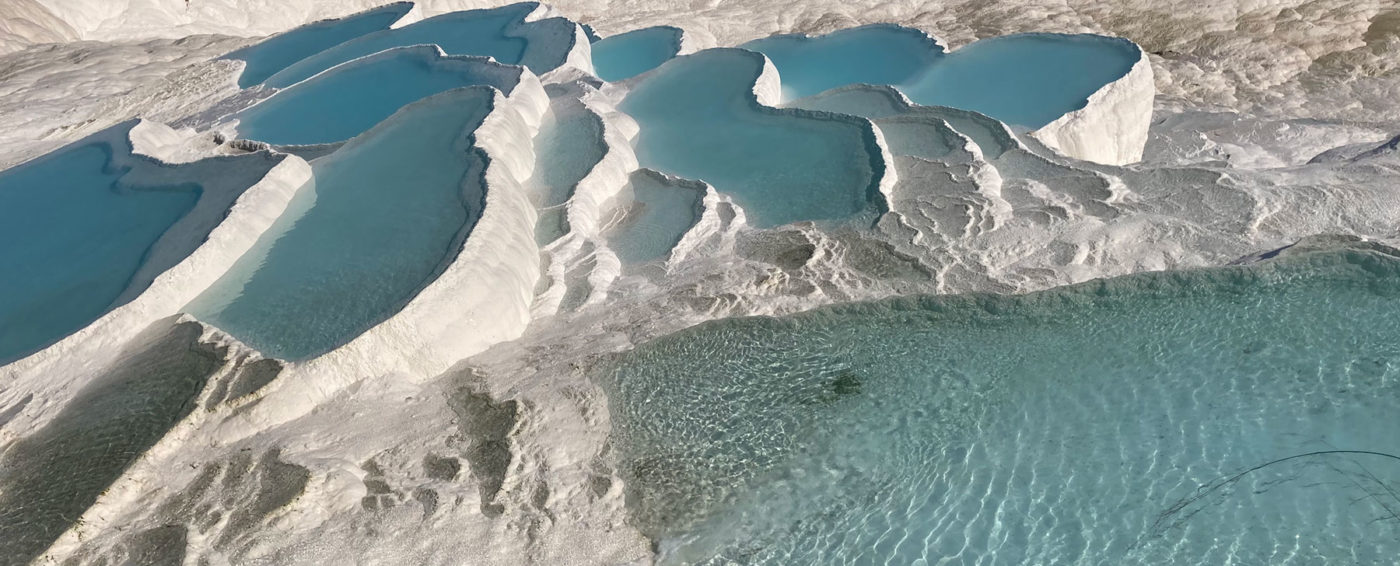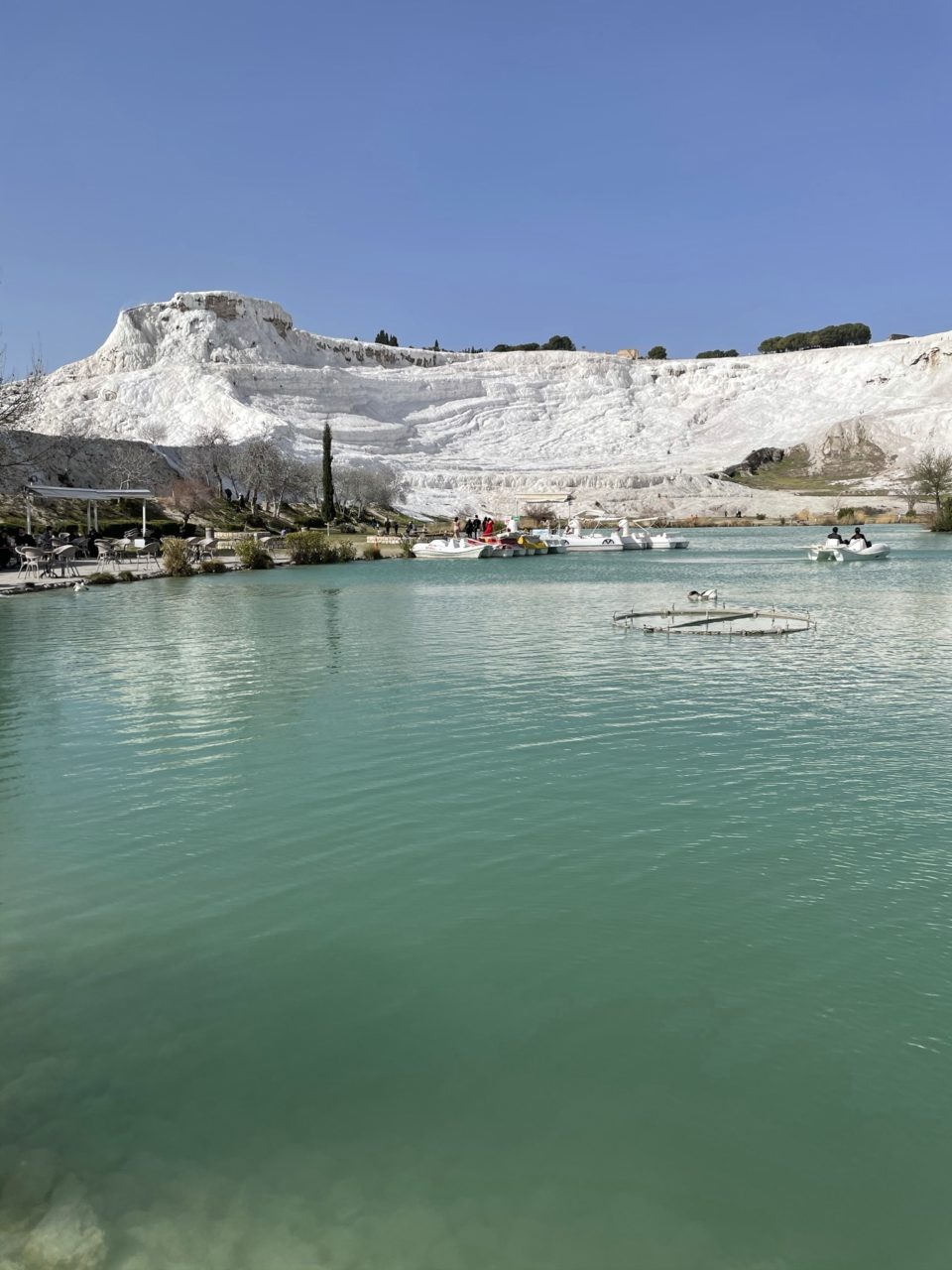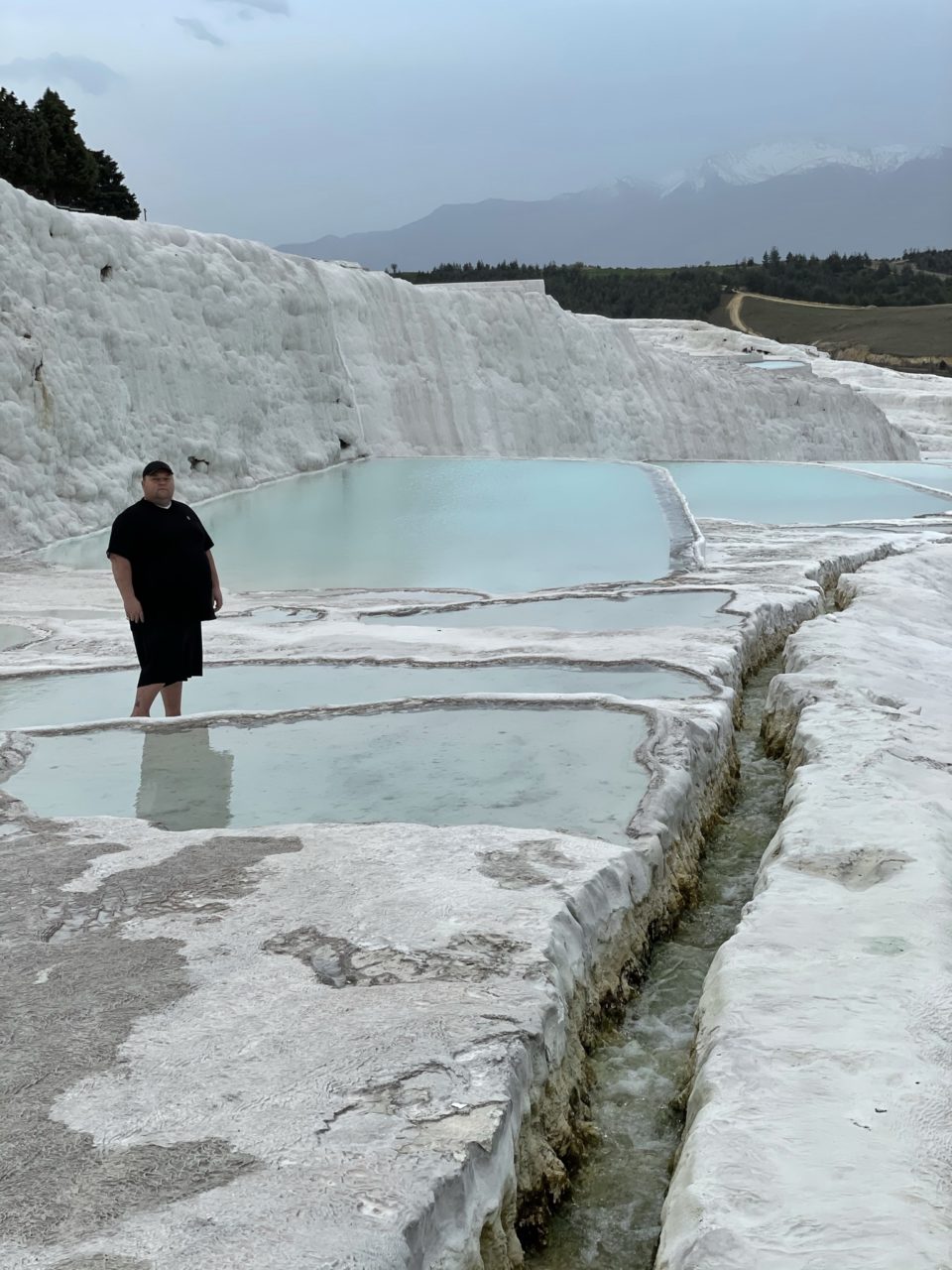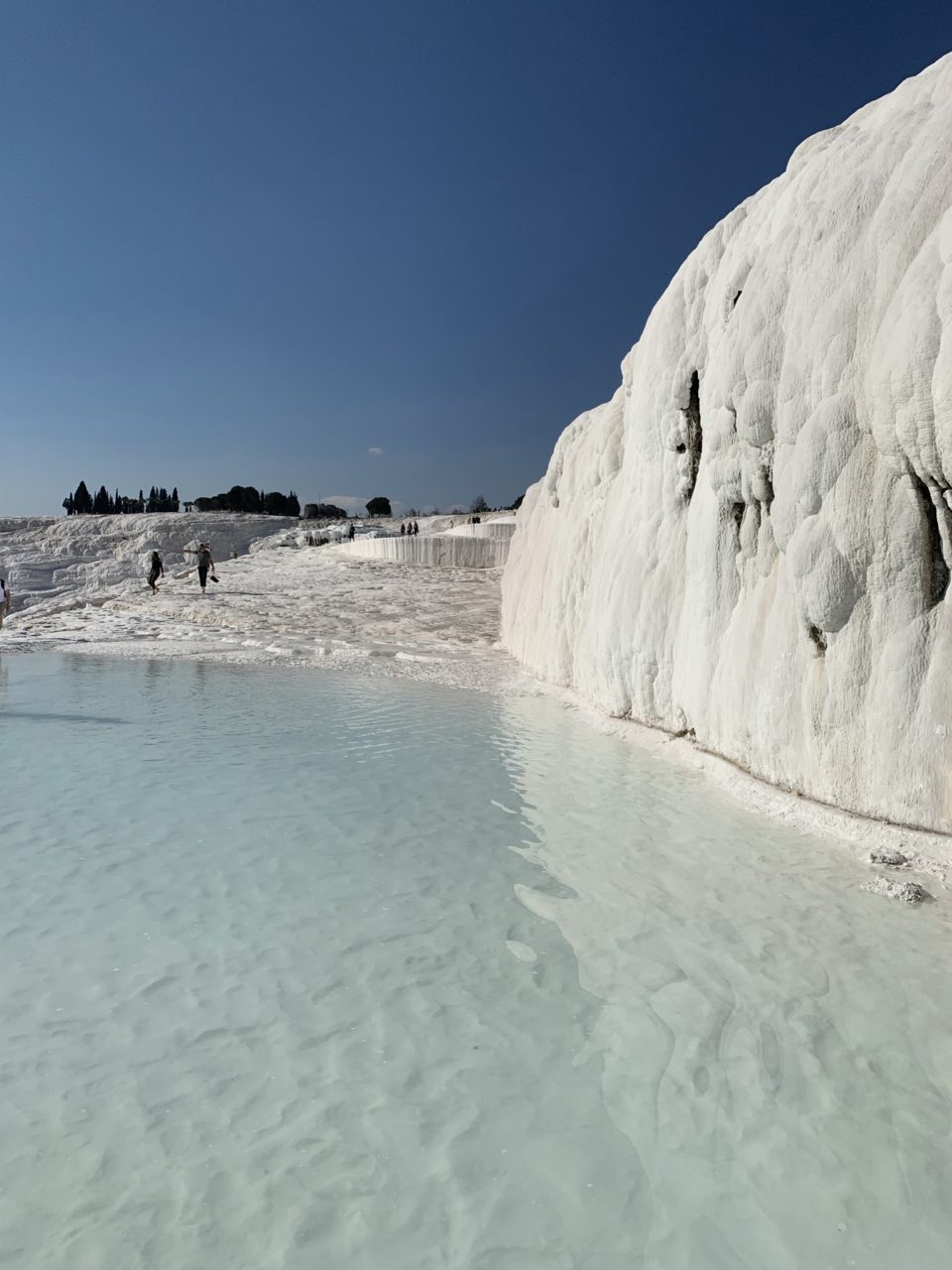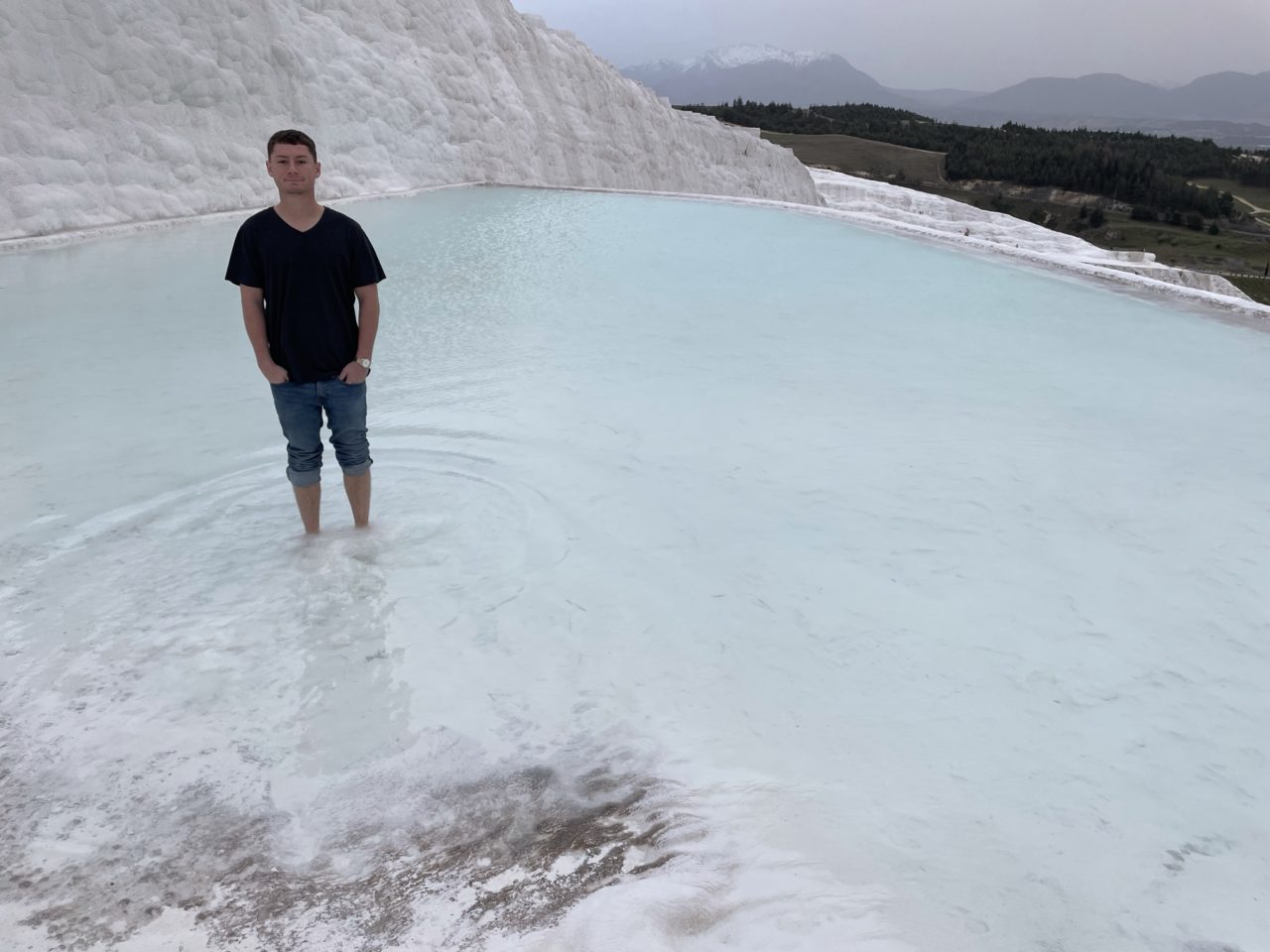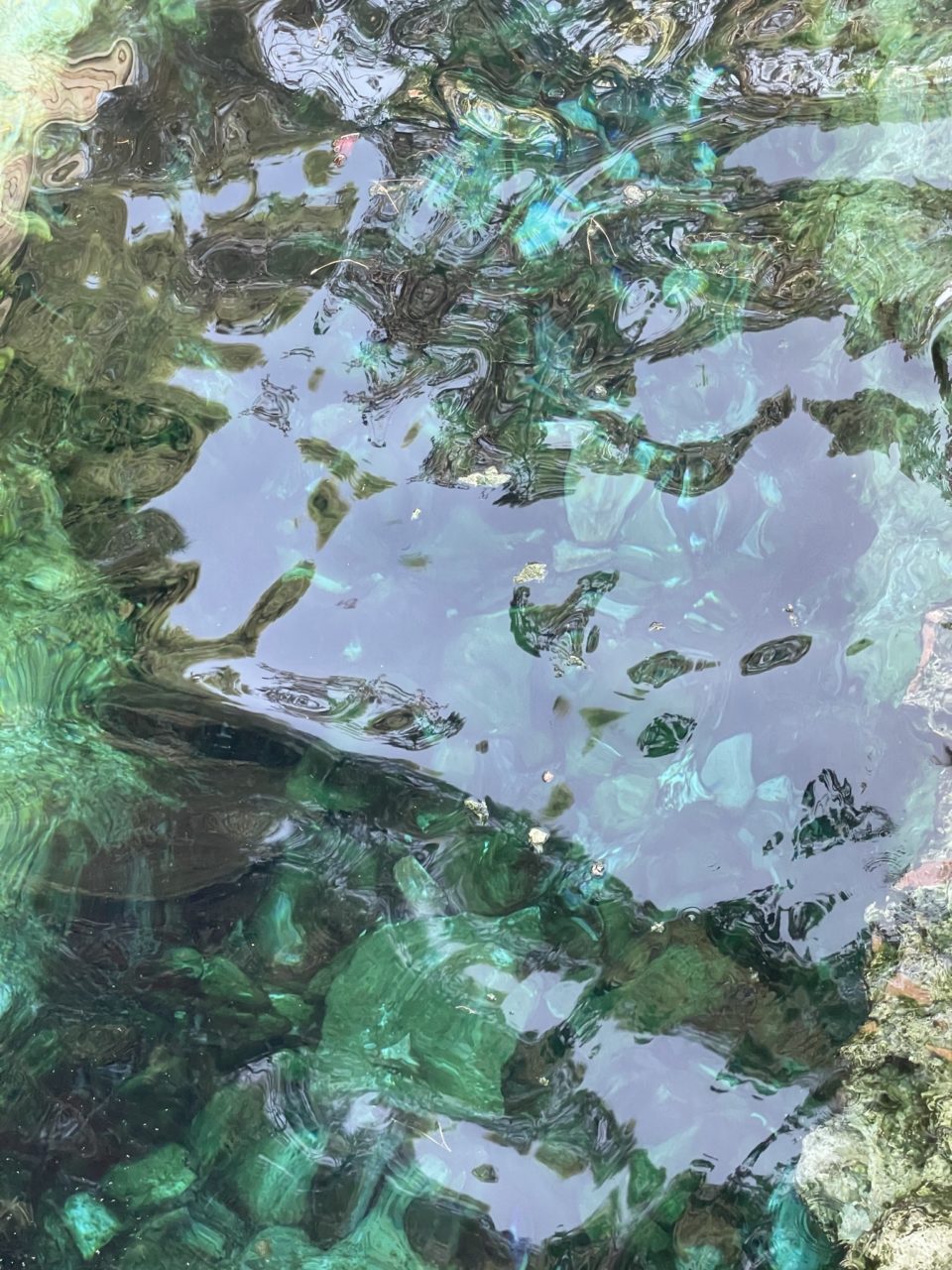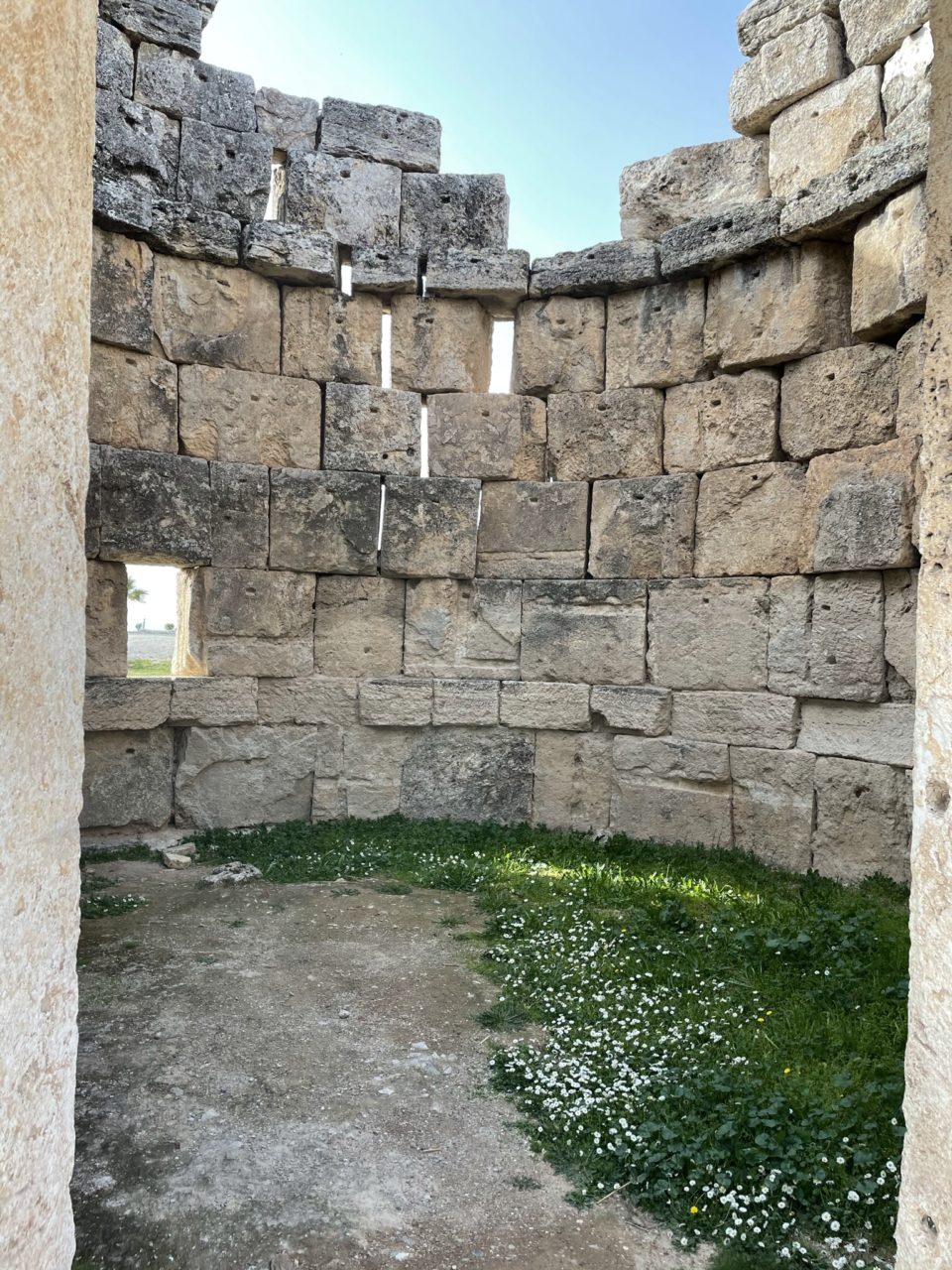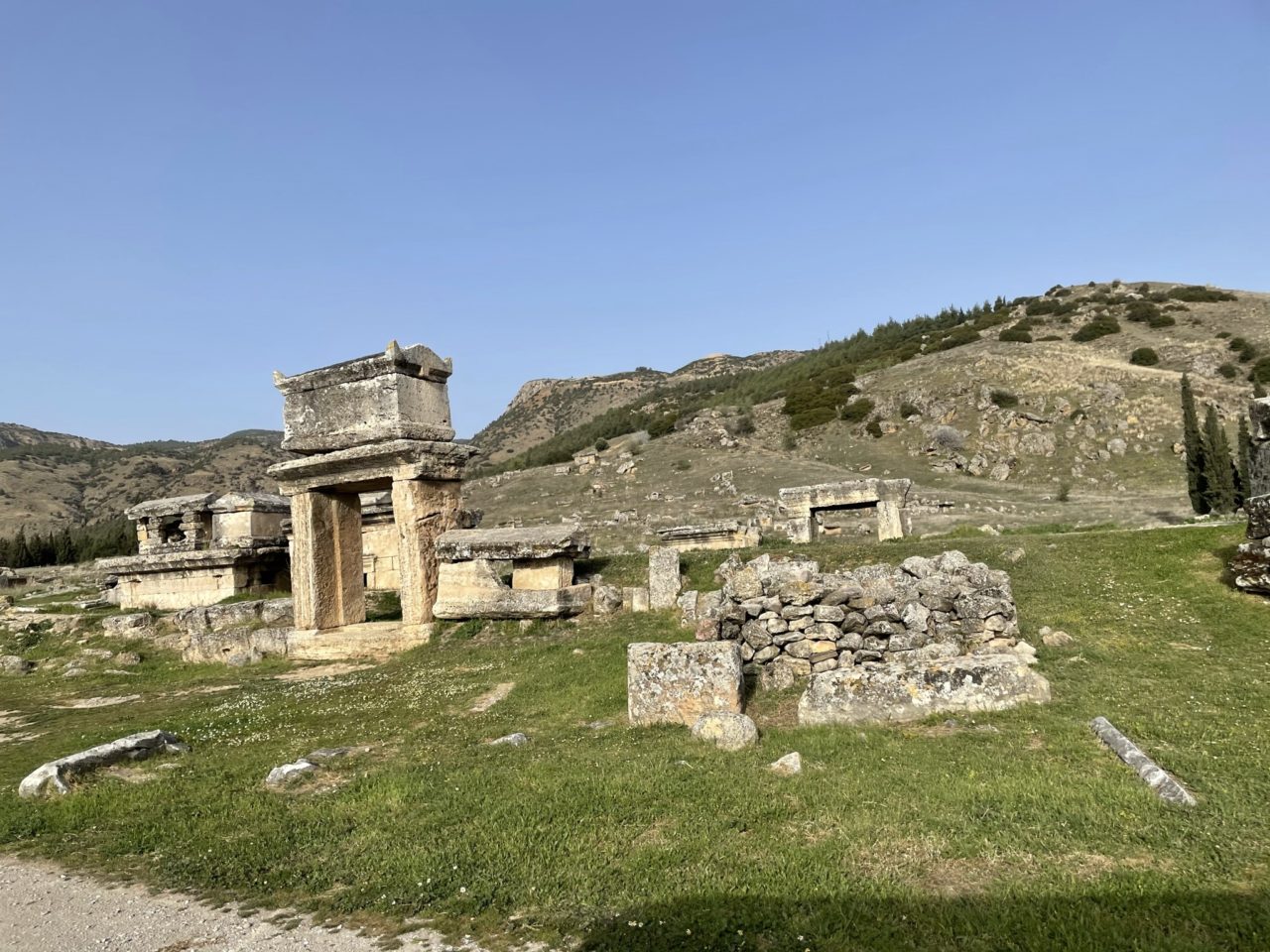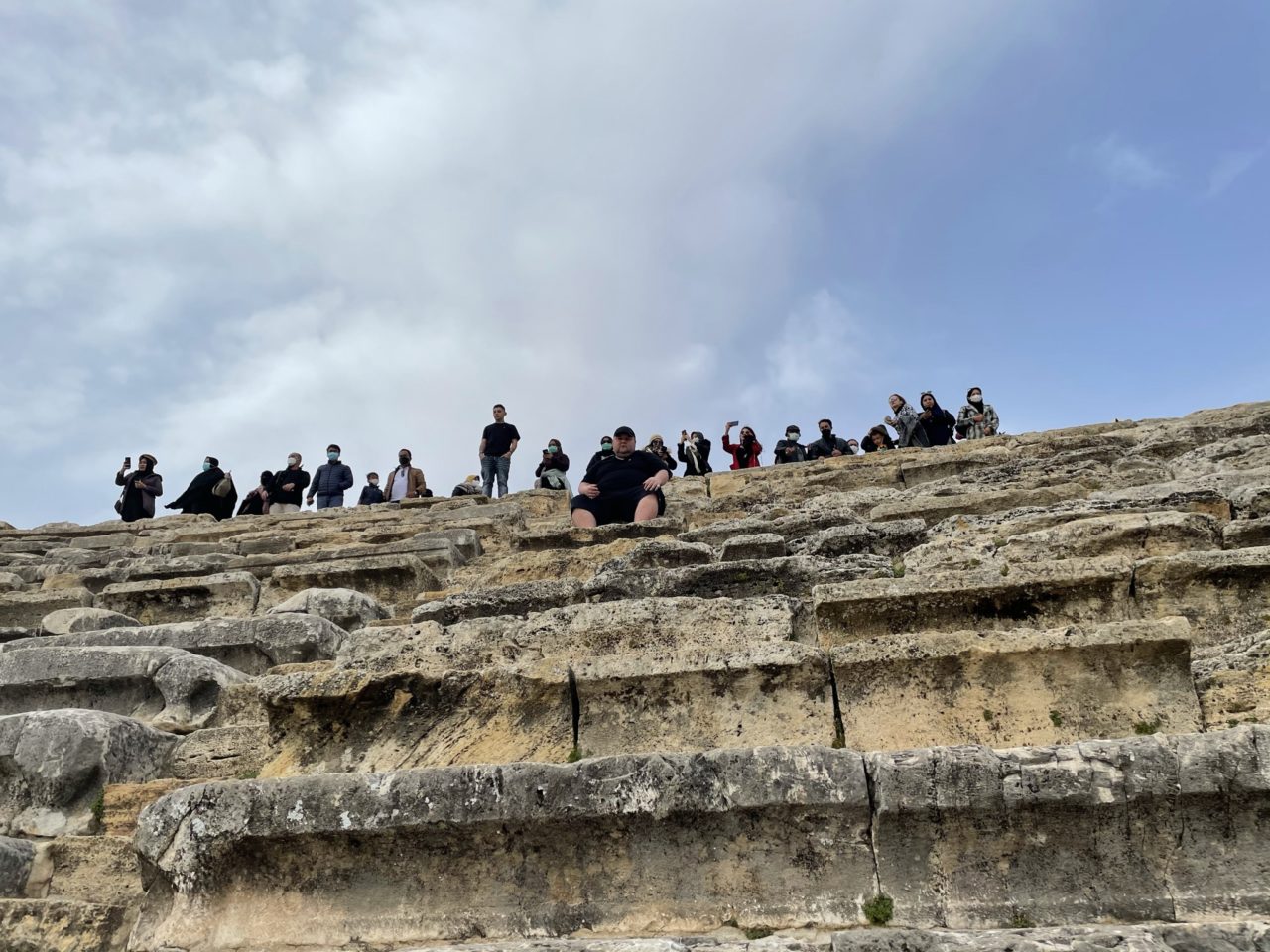March 29, 2021
Pamukkale: Hot Springs and Travertine Terraces
We’re now exploring the amazing site of Pamukkale. Pamukkale is located in the hills of the Denizli Province in southwestern Turkey. Pamukkale is about 6 hours from Istanbul. In addition to being known for its brilliant white travertine terraces and warm thermal pools, it’s also the site of the well-preserved ruins of the Greek-Roman city Hierapolis, which contains one of the oldest theaters in the world. It’s also the home to an ancient Roman burial ground, with over 2,708 known Roman graves. Needless to say, there’s so much to see and do, I would highly recommend checking it out.
Pamukkale
Pamukkale is mainly known for its mineral-rich, thermal waters flowing down white travertine terraces. The area is famous for a bright, white carbonate mineral left by the flowing water. It almost looks like a blanket of snow! Pamukkale is over 8,860 feet long, 1970 feet wide, and 525 feet high. So, it can be seen from as far as 20 miles away. Its Turkish name, Pamukkale, means Cotton Castle. The Turkish name comes from the shimmering white surface of minerals that have been crystalizing onto the surface for years, creating mineral terraces.
White Travertine Pools
For hundreds of years, tourists and locals have visited this amazing site to explore these hot springs, which range in temperatures from 35 to 100 degrees Celsius. These ancient thermal pools have been drawing visitors to the area since ancient Roman times. When you’re in the pools, you can look down past the valley and see the town and huge lake. It looks like you’re in the mountains looking at snow, but it’s not snow at all, it’s all the minerals.
For thousands of years, these minerals have formed and are known for their healing properties. The Turks often say that bathing in these pools will heal certain illnesses including chronic disorders, digestive problems, eye and skin diseases, and many more. So, Pamukkale has been a popular spa attraction since ancient times. At a glance, the pools look like they may be cold because it looks so much like snow. However, they are warm and super relaxing.
Cleopatra’s Antique Pool
Located above the Pamukkale’s white travertine pools is one special location fed by the same hot springs called Cleopatra’s Antique Pool. This main pool was where Cleopatra bathed. It’s some of the clearest water I’ve ever seen. There are actual ancient Roman columns under the water, which is so cool. It’s an amazing sight to see and filled with so much history that we were just in awe. It’s so cool that we were able to walk, talk, and sit where the Romans did.
Unlike the white water of the lower pools, the Antique Pool used by Cleopatra, the Queen of Egypt, is clear warm water. It was once surrounded by a Roman Temple to Apollo. Today, it can be enjoyed by both locals and tourists as you swim around the fallen columns and other Roman artifacts, while soaking up the sun and healing properties of the water.
Hierapolis
The ancient Roman city of Hierapolis was transformed into a spa in the 2nd century BC. The city started as a military outpost, but it was later transformed into a spa center. Interestingly enough it became a medical location where doctors used the hot springs for healing treatments. Because of this, the city continued to grow and became very wealthy. However, in 17 AD, a major earthquake destroyed the city leaving it in ruins. The Romans rebuilt it and ended up adding a huge theater.
The theater is one of the most popular sights to see if you’re visiting the ruins of Hierapolis. It’s very cool. You’re allowed to go inside it and sit down or walk up and down the stairs. Over the years, a lot of earthquakes occurred and the city got abandoned around the 14th century. In the 20th century, the ancient city was rediscovered by travelers and the hot springs became famous again. Now, people come from all over the world to view the beautiful ruins of the city.
We had such a great time exploring Pamukkale. Turkey is a big country with a lot to see, so most people who visit don’t make it to Pamukkale. However, I would highly recommend taking the trip because it was incredible. Thanks for reading along with me. If you have any questions or want to send me a message, you can here. Stay tuned for more adventures in Turkey!
Share This Post
Big Guy Big World is a travel blog, following Mark Jacoby’s journey as a big guy on a bigger journey, exploring the world during a global pandemic. Follow along as we experience some of the world’s most beautiful and exotic places.
